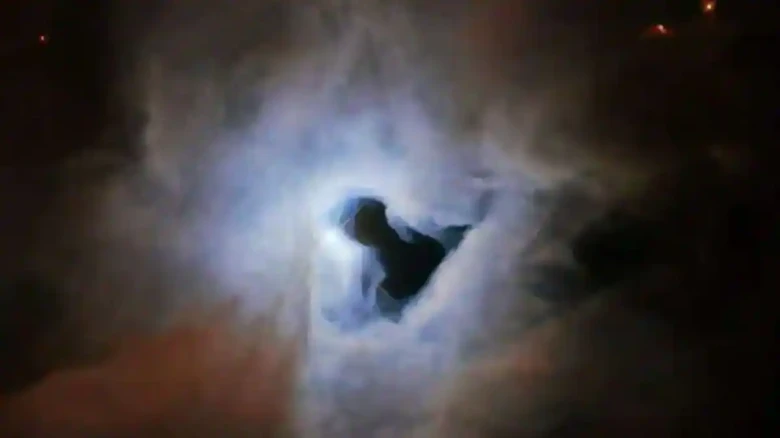Regional

The astounding image depicted a "peculiar portrait" of the swirling gas and dust clouds...
Digital Desk: NASA's Hubble Space Telescope recently revealed a stunning image of a "mysterious cosmic keyhole." The telescope, which is known for its momentous discoveries, captured the picture of NGC 1999, a reflection nebula in the constellation Orion, located 1,350 light-years from Earth.
The astounding image depicted a "peculiar portrait" of the swirling gas and dust clouds. The National Aeronautics and Space Administration (NASA) released the ethereal image of the nebula on Friday. "The nebula is quite literally composed of stardust: the leftover dust and gas from a newborn star!" NASA Hubble wrote in the caption of a Twitter post.
"Just like fog curling around a streetlamp, reflection nebulae like NGC 1999 shine by the light from an embedded source," the American space agency said in a press note.
NASA stated that the light source of the nebula is a young star called V380 Orion. The most noticeable aspect of the image is the large hole in the center, which resembles an inky black keyhole of cosmic proportions.
In the press release, NASA informed that the image comes from a revisiting of older Hubble data from 1999. Back then, astronomers thought the dark spot in NGC 1999 was a "Bok globule," a dense, frigid cloud of gas, molecules, and cosmic dust that obscured background light.
However, additional data from other telescopes revealed that the keyhole is simply an empty region of space. "The origin of this unexplained rift in the heart of NGC 1999 remains unknown," NASA wrote.
Notably, the Hubble Space Telescope, which was launched more than 30 years ago, is a joint project of NASA and ESA (European Space Agency).
Leave A Comment